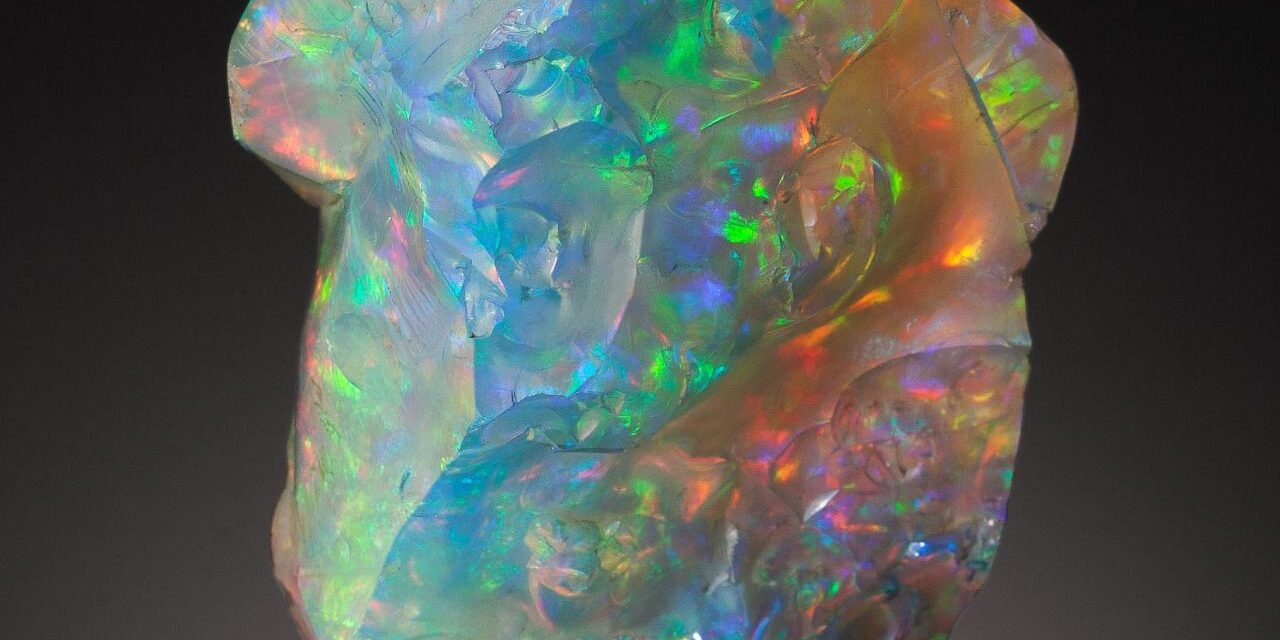Opals are one of the most fascinating gemstones, known for their brilliant play-of-color and unique formation. Opal specimens, in particular, hold great value for collectors, gem enthusiasts, and jewelry makers alike. Whether in raw, polished, or matrix form, opal specimens captivate with their dazzling spectrum of colors and rich geological history. In this article, we will explore what makes opal specimens so special, their different types, how they form, and where to find them.
What Are Opal Specimens?
Opal specimens are natural formations of opal that showcase the gemstone in its raw or minimally processed state. Unlike cut and faceted opals used in jewelry, specimens often retain their natural host rock, which can enhance their aesthetic appeal. These specimens are highly sought after by collectors and mineral enthusiasts due to their rarity and unique patterns.
Types of Opal Specimens
Opals come in a variety of types, each with distinct characteristics:
- Precious Opal – Exhibits the famous play-of-color effect, where light diffracts through silica spheres, creating vibrant flashes of color.
- Common Opal (Potch) – Lacks the play-of-color but can display beautiful pastel hues and interesting textures.
- Boulder Opal – Found embedded within ironstone, often retaining a natural backing that enhances its color play.
- Matrix Opal – Displays opal veins interwoven within the host rock, creating stunning patterns.
- Fire Opal – Typically found in hues of red, orange, and yellow, with or without play-of-color.
- Black Opal – The rarest and most valuable type, primarily found in Australia, displaying intense color contrast on a dark background.
How Opal Specimens Form
Opals form over millions of years through a process involving the deposition of silica in cracks and voids within rocks. When water rich in silica seeps into underground spaces, it slowly deposits silica layers over time. In certain conditions, the arrangement of silica spheres results in the mesmerizing play-of-color seen in precious opals.
Where to Find Opal Specimens
Opals are mined in various locations worldwide, with some regions being particularly famous for producing high-quality specimens:
- Australia – The leading producer of opals, with key sites in Lightning Ridge (black opal), Coober Pedy (white opal), and Queensland (boulder opal).
- Ethiopia – Known for its vibrant Welo opals with striking transparency and color play.
- Mexico – A primary source of fire opals, renowned for their bright orange and red hues.
- United States – Opals can be found in Nevada, Idaho, and Oregon, with Virgin Valley being a notable source of black opals.
- Brazil and Honduras – Lesser-known but still significant sources of opal specimens.
Collecting and Caring for Opal Specimens
If you’re an opal enthusiast looking to collect specimens, here are some key tips:
- Handling: Opals are delicate and can crack due to sudden temperature changes or dehydration.
- Storage: Keep opal specimens in a padded container and away from direct sunlight to prevent dehydration.
- Cleaning: Use a soft cloth and mild soap with lukewarm water. Avoid ultrasonic cleaners or harsh chemicals.
- Displaying: Consider placing opal specimens in a humid environment or a sealed case to maintain their moisture content.
Conclusion
Opal specimens are nature’s masterpieces, offering a glimpse into the earth’s geological artistry. Whether admired for their raw beauty, historical significance, or collector’s value, these gemstones continue to mesmerize people around the world. Whether you’re a seasoned collector or just starting, exploring the world of opal specimens is a rewarding journey filled with color and wonder.







